Medieval castles, charming cobblestone villages, vibrant cities, and sun-kissed beaches—Portugal offers a rich and varied experience. From its deep-rooted history and delicious cuisine to its breathtaking landscapes, this is just the beginning of what awaits.
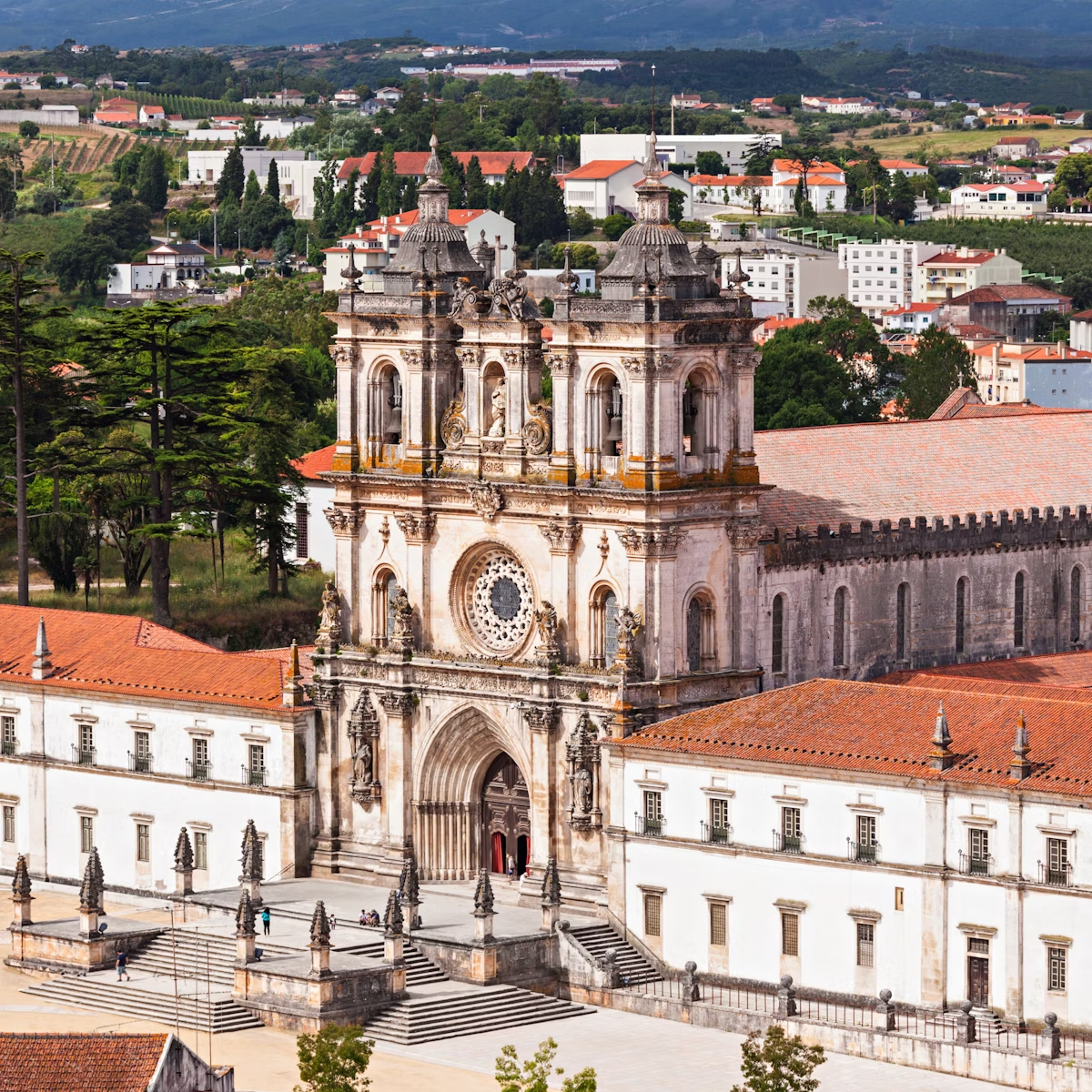
While in Peniche, don’t miss the 8km loop around the entire headland. Although much of the route follows the road and can get quite hot, it’s well worth it. At the farthest point, Cabo Carvoeiro, you’ll find a lighthouse, stunning views of a dramatic rock stack and the Berlenga Islands, along with a top-notch restaurant.
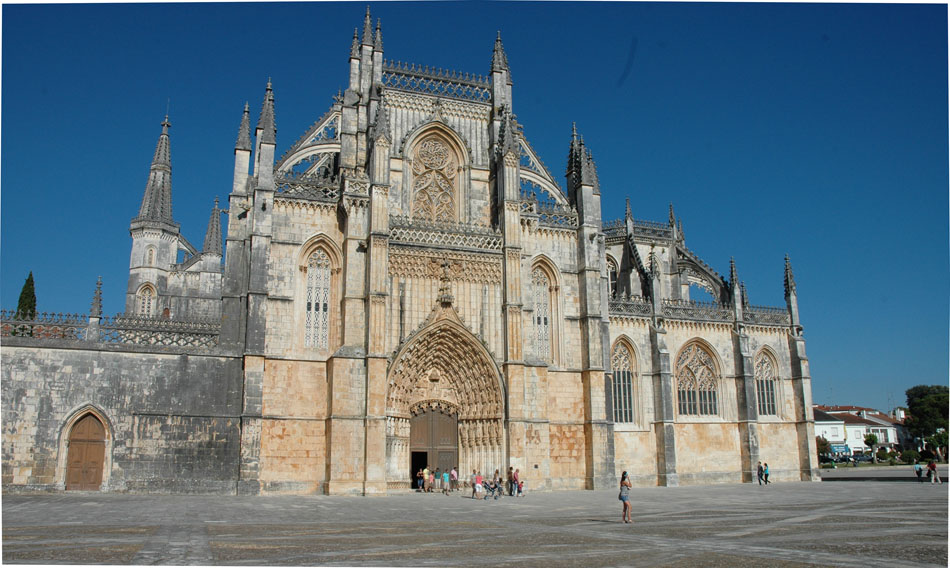
The awe-inspiring Batalha Monastery was built to honor Portugal’s victory at the Battle of Aljubarrota in 1385, where 6,500 Portuguese troops led by Dom Nuno Álvares Pereira, along with a few hundred English allies, defeated a Castilian army of 30,000. King João I had vowed to build a grand monastery if victorious—construction began two years later, and by 1434, much of it was completed in striking Flamboyant Gothic style. However, it’s the later Manueline additions, especially the “Unfinished Chapels,” that truly dazzle.
The exterior is a feast of carved limestone: spires, flying buttresses, balustrades, pinnacles, and intricately detailed windows. The dramatic western portal is layered with arches featuring saints, angels, apostles, and prophets, crowned by images of Christ and the Evangelists.
Inside, the soaring Gothic nave—the tallest in Portugal—is flooded with colored light from stained-glass windows. Just to the right of the entrance is the Capela do Fundador (Founder’s Chapel), a star-vaulted, lantern-lit square chamber. At its center lies the joint tomb of João I and Philippa of Lancaster, whose 1387 marriage sealed the enduring alliance between Portugal and England. Their sons, including Henry the Navigator, rest along the chapel’s south wall.
The adjoining Claustro Real (Royal Cloister), begun by Afonso Domingues, stuns with later additions by Mateus Fernandes. Each arch is adorned with elaborate Manueline carvings: crosses, armillary spheres, twisted vines, sea motifs, and exotic flora. Nearby, three slender cypress trees mirror the Gothic spires above the chapter house—where you might even spot ancient graffiti on the walls.
In contrast, the neighboring Claustro de Dom Afonso V is a more restrained Gothic space, offering a calm counterbalance. Between the two is an interpretation center.
To the east lies the Sala do Capítulo (Chapter House), with a magnificent 16th-century stained-glass window. Its vast vault was considered so risky that condemned prisoners were tasked with dismantling its supports. Today, it houses the tomb of unknown soldiers—one Mozambican and one Flemish—from World War I, guarded by an honor guard.
Most breathtaking of all are the Capelas Imperfeitas (Unfinished Chapels), accessible only from outside the monastery. This octagonal mausoleum, started in 1437, remains incomplete—but its Manueline details, especially the ornate 15m-high entrance bursting with stone-carved flora and spirals, are unforgettable. Opposite this gateway lie the tombs of Dom Duarte and his queen, forever part of this open-sky masterpiece.

One of Iberia’s most impressive monasteries, the Monastery of Alcobaça dominates the town with its monumental Baroque façade. Step beyond this grand exterior and you’ll find a stark yet majestic 12th-century Cistercian church—free to enter—featuring a soaring forest of bare Gothic arches that reflect the order’s austere ideals. But the real essence of the monastery lies in the rest of the complex: its vast dormitory, hauntingly atmospheric refectory, and other monastic spaces that bring the Cistercian way of life vividly to life—though, by many accounts, the lifestyle here wasn’t always as strict as intended.
Founded in 1153 by Portugal’s first king, Afonso Henriques, to fulfill a vow made during the 1147 reconquest of Santarém, the monastery became one of the wealthiest in the land. At its peak, it housed 999 monks who conducted round-the-clock Mass in shifts. Over time, however, decadence crept in. Visitors like the 18th-century writer William Beckford described the monks with disdain, noting their gluttony and indulgence. The monastic order was finally dissolved in 1834.
The church’s original façade was significantly altered in the 17th and 18th centuries, but inside, the scale and simplicity remain striking. Inspired by the Abbey of Clairvaux, the nave stretches a dramatic 106 meters long but is just 23 meters wide, with towering columns emphasizing its vertical grandeur.
In the north and south transepts lie the monastery’s most poignant treasures—two elaborately carved 14th-century tombs of Dom Pedro and Dona Inês de Castro. Their tragic love story is immortalized in the tombs’ fine detailing and the inscription, Até ao Fim do Mundo (“Until the end of the world”). As per Pedro’s wishes, the tombs lie foot to foot, so the lovers may see each other immediately upon resurrection.
Elsewhere in the church, the chapel of St Bernard features expressive clay figures and rare Gothic arching in the ambulatory.
One of the most striking parts of the monastery is the grand kitchen, dramatically expanded in the 18th century. A water channel once ran through its center, allowing fish to be brought directly into the kitchen—a feature Beckford called “the most distinguished temple of gluttony in all Europe.”
The adjacent vaulted refectory, where monks dined in silence while scripture was read from a pulpit accessed by a graceful arched staircase, is another highlight. A narrow entrance ensured that overweight monks—unable to pass through—were put on involuntary fasts.
The serene Claustro do Silêncio (Cloister of Silence), begun by King Dinis in the 14th century, features elegant Gothic arches and tracery. The Manueline upper level was added in the 16th century. Off the cloister’s northwest corner lies the Sala dos Reis (Room of the Kings), where statues of nearly every Portuguese monarch line the walls, above decorative azulejo panels depicting scenes from the monastery’s history. Above it all, the vast vaulted dormitory offers a glimpse into monastic life on a grand scale.
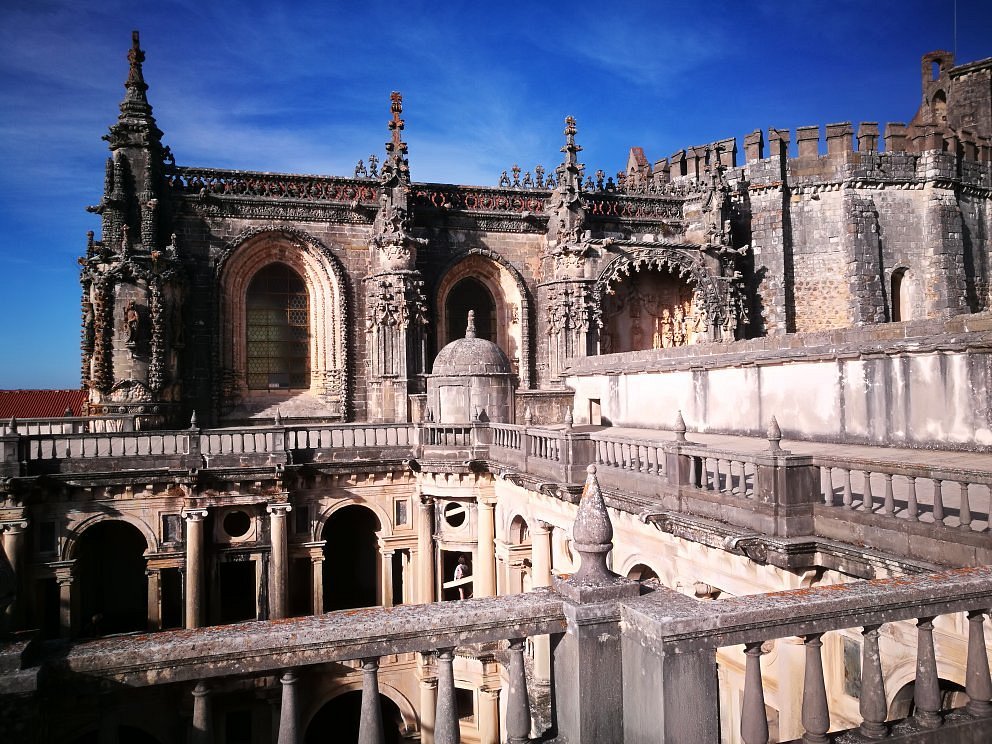
Shrouded in splendour and mystery, the Knights Templar held immense power in Portugal from the 12th to the 16th centuries, playing a vital role in financing the Age of Discoveries. Their headquarters, the Convento de Cristo, sits atop wooded slopes above the town of Tomar, enclosed by sturdy 12th-century walls. Founded in 1160 by Gualdim Pais, the convent is a magnificent stone monument featuring a rich tapestry of chapels, cloisters, and choirs, each layer reflecting the contributions of successive kings and Grand Masters.
At the heart of the complex stands the Charola, an extraordinary 16-sided church modeled after the Church of the Holy Sepulchre in Jerusalem. This architectural gem has a distinct Eastern aura, very different from other Portuguese churches. Soaring heights, elegant proportions, and ornate details create an ethereal atmosphere. Legend holds that its circular form allowed knights to attend Mass on horseback. The centrepiece is a dramatic Gothic high altar, surrounded by early 16th-century wall paintings. To the left, an oversized funnel-shaped organ pipe remains, though the instrument itself has long vanished.
King Dom Manuel expanded the Charola by adding a western nave and a magnificent two-level choir. The coro alto (upper choir) is a masterpiece of the Manueline style, with richly decorated vaulting and window tracery. The western entrance to the nave showcases stunning Spanish Plateresque design.
The most iconic and fantastical element of the complex is the Janela Manuelina (Manueline Window), located on the church’s western side. Seemingly grown from the stone wall itself, it is an exuberant celebration of Portugal’s maritime era. Twisting ropes, seaweed motifs, cork boats, and armillary spheres all swirl together beneath the Cross of the Order of Christ and the royal coat of arms of Dom Manuel. The best vantage point is from the rooftop of the nearby Claustro de Santa Bárbara, where signs guide visitors to the window. A similarly elaborate window is hidden on the church’s southern side, though it is mostly obscured by the Claustro Principal.
To the east of the Charola are two serene cloisters adorned with blue-and-white azulejos, built during the tenure of Prince Henry the Navigator as Grand Master in the 15th century. The Claustro do Cemitério (Cemetery Cloister) features two 16th-century tombs and tranquil citrus trees, while the Claustro da Lavagem (Ablutions Cloister), with two levels, offers scenic views of the crenellated remains of the Templars’ original castle.
In contrast to the rich ornamentation elsewhere, the Claustro Principal (Great Cloister) is a refined expression of Renaissance elegance. Commissioned under King João III, it was likely begun by Spanish architect Diogo de Torralva and completed in 1587 by the Italian Filippo Terzi. These architects were instrumental in introducing Renaissance style to Portugal. With its harmonious Greek columns, soft arches, and graceful spiral staircases, the Claustro Principal is widely considered the finest example of Renaissance architecture in the country.
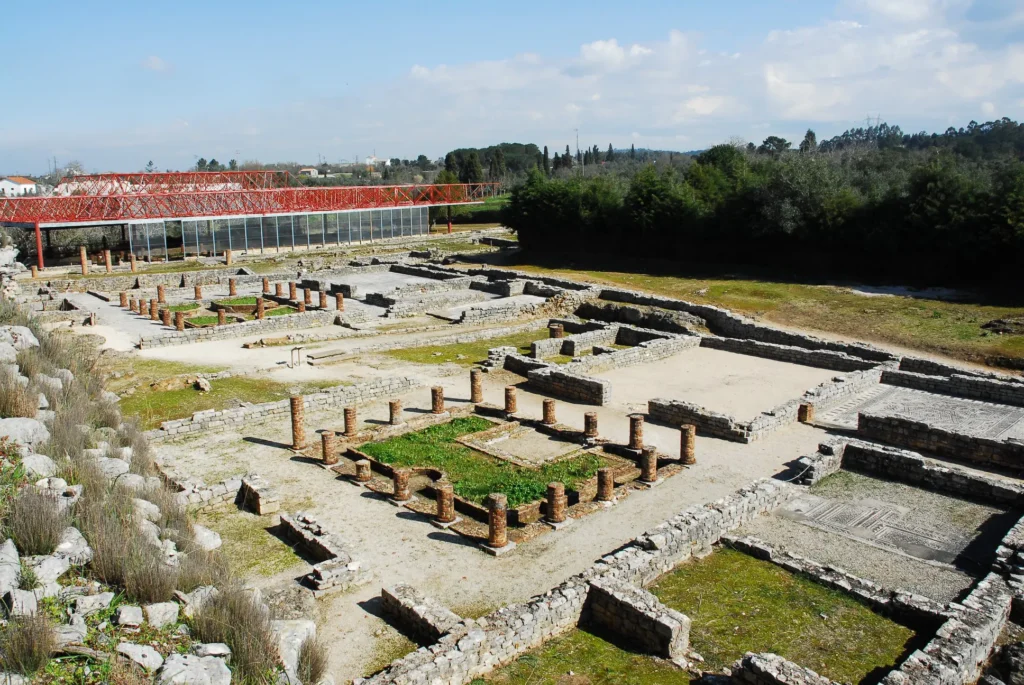
Nestled in the verdant countryside southwest of Coimbra, Conímbriga is Portugal’s largest and most remarkable Roman archaeological site. Once a thriving city in the Roman province of Lusitania, Conímbriga offers a fascinating glimpse into ancient life, with extensive and exceptionally well-preserved ruins. Among its standout features are Roman villas adorned with intricate mosaics—especially the Casa dos Repuxos (House of Fountains)—and a formidable 3rd-century defensive wall.
Begin (or conclude) your visit at the on-site museum, located near the entrance. This compact but informative museum displays a variety of artefacts unearthed at the site, including mosaics, coins, jewellery, household objects, and sculptural fragments. A detailed scale model of the forum helps bring the ruins to life and provides context for the layout of the ancient city.
Though Conímbriga’s origins stretch back to Celtic times—with briga meaning a fortified place—it flourished under Roman rule after their arrival in the 2nd century BC. Its strategic location on the major Roman road between Olisipo (Lisbon) and Bracara Augusta (Braga) contributed to its prosperity during the 1st and 2nd centuries AD. However, the city later suffered from repeated barbarian invasions and was eventually overtaken in 468 AD by the Suebi, a Germanic tribe. Many residents fled to nearby Aeminium (modern-day Coimbra), helping preserve Conímbriga’s structures.
The first major structure you’ll encounter is the imposing 3rd-century wall, built hastily to repel barbarian attacks. This wall cuts through the heart of the city, and entire residential quarters were abandoned in its construction.
Among the many ruins, several mosaic-floored villas lie beneath and beyond the wall. These include the Casa dos Esqueletos (House of Skeletons) and the Casa da Cruz Suástica (House of the Swastika)—where the swastika symbol was used by Romans to represent good fortune. Beyond the wall stands the Casa de Cantaber, Conímbriga’s largest private villa.
The most impressive mosaics are found in the Casa dos Repuxos, a 1st-century villa centered around a small garden with water features. Here, vivid scenes depict the four seasons and various hunting episodes, showcasing the craftsmanship and artistic flair of Roman artisans.
Other notable sights include the remains of the Grandes Termas do Sul (Great Southern Baths), a segment of a 3-kilometre aqueduct, and the forum, once bordered by elegant covered porticoes.
To reach Conímbriga by public transport, Transdev buses run from near Coimbra A station to the site. The journey takes about 45 minutes and costs €2.55, with three departures daily. However, schedules vary seasonally, so it’s best to confirm current times with Coimbra’s tourist office (turismo).
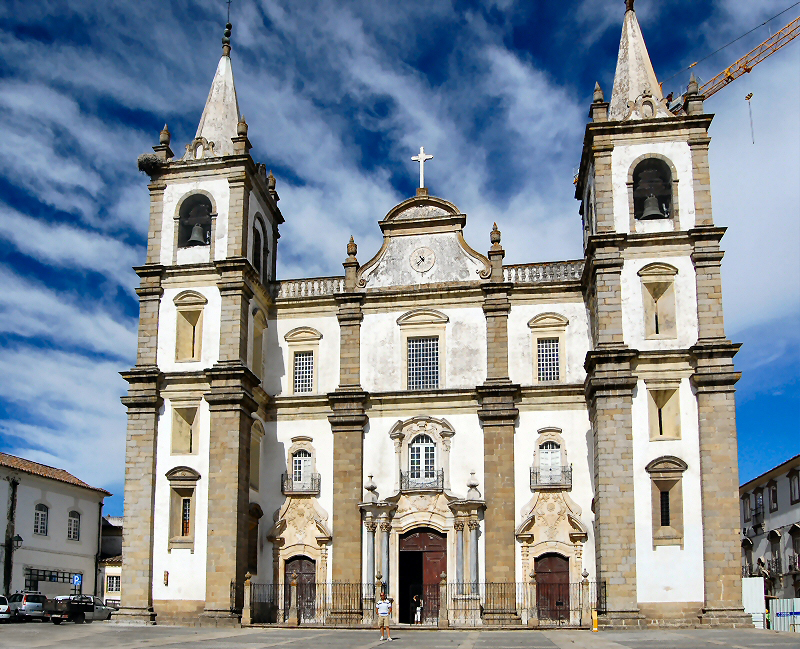
Braga Cathedral, the oldest in Portugal, stands as a magnificent architectural palimpsest, begun in 1070 with the restoration of the archdiocese and completed in the 12th century. It’s a sprawling complex that showcases a blend of styles—from austere Romanesque to flamboyant Manueline and ornate Baroque—offering architecture enthusiasts a rich and varied experience.
The cathedral’s Romanesque core is its most historically significant feature. It survives in the overall structure, the southern entrance, and the exquisite west portal, which is carved with scenes from the medieval tale of Reynard the Fox (now protected inside a Gothic porch). On the exterior, the Manueline towers and roof, among the earliest works by master builder João de Castilho (who later worked on Lisbon’s Jerónimos Monastery), add decorative elegance.
Visitors can enter the cathedral either through the west portal or via a northern courtyard flanked by Gothic chapels. Inside, the church reveals a finely carved Manueline altarpiece, a tall chapel adorned with azulejos narrating the story of Braga’s first bishop, and a pair of spectacular Baroque twin organs, supported by sculpted satyrs and mermen. These majestic instruments are still played during Sunday Mass at 11:30 am.
Adjacent to the church is the modern Treasury Museum, which displays a rich collection of sacred artefacts. Among its highlights are the delicately sculpted Nossa Senhora do Leite (Virgin nursing Christ), attributed to 16th-century French artist Nicolas Chanterène, and the iron cross used to celebrate the first Mass in Brazil in 1500.
To explore more of the cathedral’s hidden gems, including the upper choir and chapels, a guided tour (with English-speaking guides available) and a separate ticket are required. The tour ascends a stone staircase for close views of the gilded choir stalls and dazzling organs, then descends into the cathedral’s crowning glory: the Capela dos Reis (Kings’ Chapel). This intimate space houses the tombs of Henri of Burgundy and Dona Teresa, parents of Portugal’s first king, Afonso Henriques.
The tour also includes the Capela de São Geraldo, richly clad in azulejos (originally built in the 12th century and transformed over time), and the Capela da Glória, a 14th-century chapel with a boldly Moorish-inspired interior, painted in geometric motifs during the 16th century.
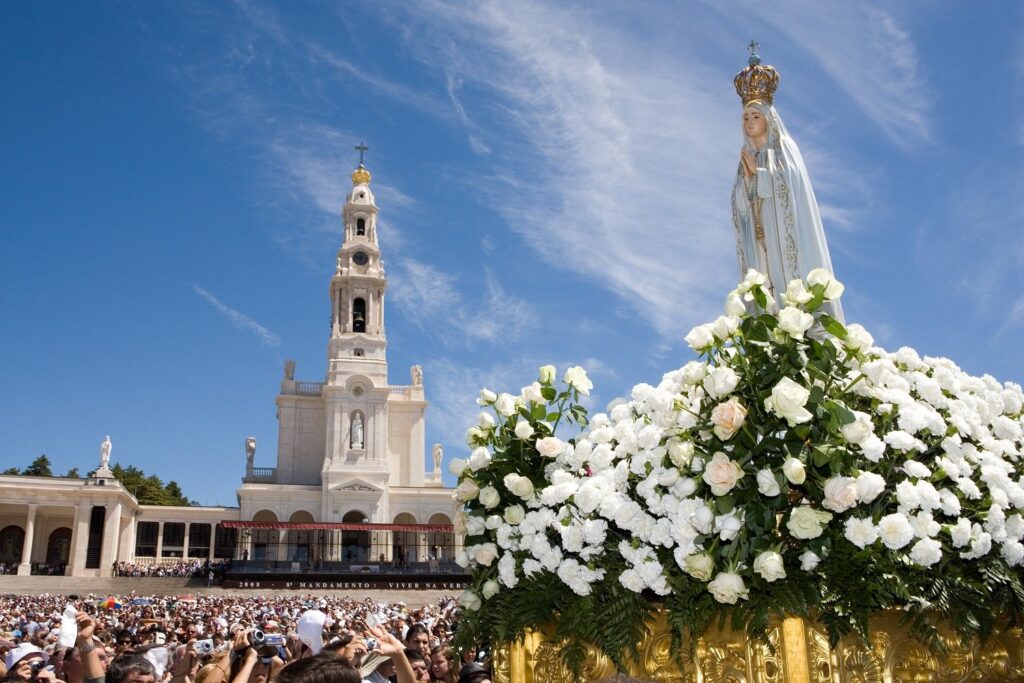
It’s hard to imagine that just a century ago, this immense sanctuary stood on rocky pastureland outside a quiet village. Today, Fátima is one of the most significant pilgrimage sites in the Catholic world, drawing millions of devotees each year.
At the eastern end of the sanctuary stands the Basílica de Nossa Senhora do Rosário de Fátima, completed in 1953. This elegant, gleaming white structure—with its grand colonnade reminiscent of St Peter’s Basilica—serves as a central focal point for pilgrims. Nearby, the Capela das Aparições (Chapel of the Apparitions) marks the sacred spot where the Virgin Mary is said to have appeared five times in 1917 to three shepherd children.
At the western end of the complex lies the Basílica da Santíssima Trindade, inaugurated in 2007. Between the two basilicas stretches a vast open esplanade, capable of holding enormous crowds during holy days and processions.
The Capela das Aparições remains the heart of spiritual devotion. Many pilgrims, fulfilling vows of penance—often made in hopes of healing a loved one or in gratitude for answered prayers—make their way across the esplanade on their knees, following a long marble path worn smooth by generations of supplicants. Beside the chapel is a blazing pyre where people light candles in prayer. The demand is such that most candles are simply tossed into the flames due to the heat and limited space. Candles, priced from €0.50 to €2.70, are sold on an honour system, and during major feast days, queues for lighting candles can last several hours. The crackling of flames and the melting wax creates a sound like a rushing waterfall.
Inside the original basilica, attention is drawn to the tombs of Os Três Pastorinhos—the three shepherd children who witnessed the apparitions. Francisco (died 1919, age 11) and Jacinta (died 1920, age 10) both succumbed to the flu epidemic and were beatified in 2000 and canonised in 2017. The third visionary, Lúcia, became a nun in Coimbra in 1928 and died there in 2005. Her beatification process is currently underway.
The modern Basílica da Santíssima Trindade is an architectural contrast—monumental yet minimalistic, with a somewhat conference-centre-like appearance. A central aisle adorned with golden angel sculptures leads to a striking etched-glass window inscribed with biblical verses in dozens of languages. Around the building, 12 bronze doors—each dedicated to one of Christ’s disciples—feature engraved scripture and stand 9 metres tall. Inside, the otherwise austere interior is brought to life by Catherine Green’s dramatic altarpiece, depicting a wild-haired, emaciated Christ, and Marko Ivan Rupnik’s intricate mosaics, adding warmth and depth.
At the entrance to the sanctuary, visitors will find a poignant symbol: a segment of the Berlin Wall, placed here as a tribute to divine intervention in the fall of communism.
Masses (held regularly in Portuguese) often take place in the Capelinha das Aparições, and from April to October, visitors can witness the beautiful nightly candlelight procession at 10pm. For up-to-date times and information, check the information booth near the chapel.
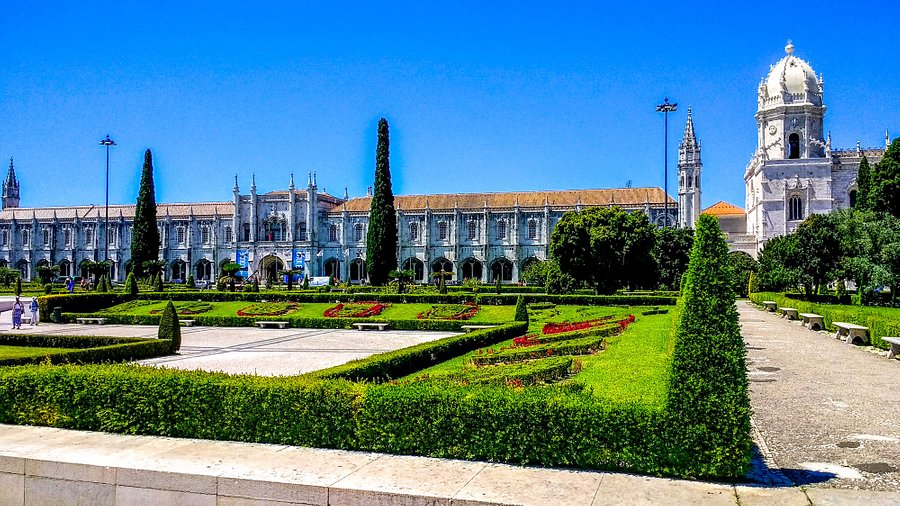
The soul of Belém beats strongest within the walls of the magnificent Mosteiro dos Jerónimos, a UNESCO World Heritage Site and one of Portugal’s greatest architectural treasures. Commissioned by King Manuel I to celebrate Vasco da Gama’s 1498 voyage to India, this monastery was funded with the riches flowing into Lisbon from the spice trade—a fitting origin for a building that seems conjured from a dream.
Designed by Diogo de Boitaca, the monastery embodies the height of the Manueline style—a uniquely Portuguese blend of Gothic, Moorish, and Renaissance elements infused with maritime motifs. The monastery was entrusted to the Order of St Jerome, whose monks lived here for over 400 years, praying for the king’s soul and offering spiritual comfort to departing sailors. When the order was dissolved in 1833, the building transitioned to a school and orphanage, a role it fulfilled until the mid-20th century.
Stepping into the church through the ornate western portal, you’re greeted by slender columns resembling tree trunks that stretch upward and seem to blossom into the lacy, vaulted stone ceiling. A warm, golden light filters through the windows, bathing the interior in a serene glow. In the lower chancel, just to the left of the entrance, lies the tomb of Vasco da Gama himself, with the revered 16th-century poet Luís Vaz de Camões interred opposite. From the upper choir, visitors are treated to a superb perspective of the nave and Portugal’s earliest Renaissance woodcarvings, which adorn the choir stalls.
But it’s the cloisters that truly leave a lasting impression. Crafted from pale honey-hued limestone, they seem almost alive—a riot of intricate carvings featuring curling vines, rope motifs, armillary spheres, twisting columns, and fantastical creatures. Every arch and turret is soaked in symbolism, from the Cross of the Military Order to the gargoyles and mythic beasts that peer from the balustrades above. The cloisters are a place to wander slowly, soaking in the details and the sense of sacred quiet that still lingers.
If you’re planning to also visit the Museu Nacional de Arqueologia, located in the western wing of the monastery, consider purchasing a combined admission ticket for €12, which grants access to both and offers a small saving.
WhatsApp us